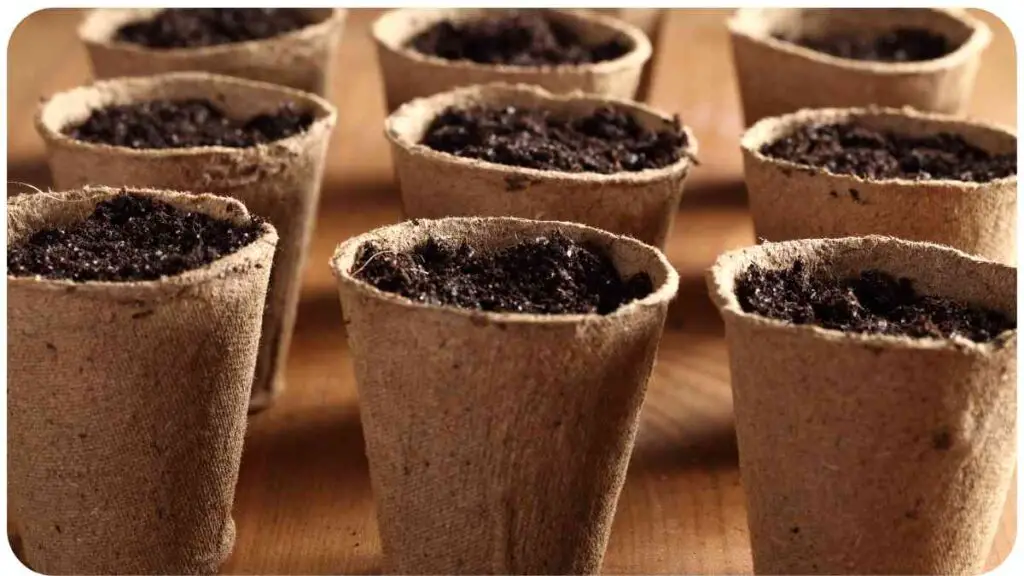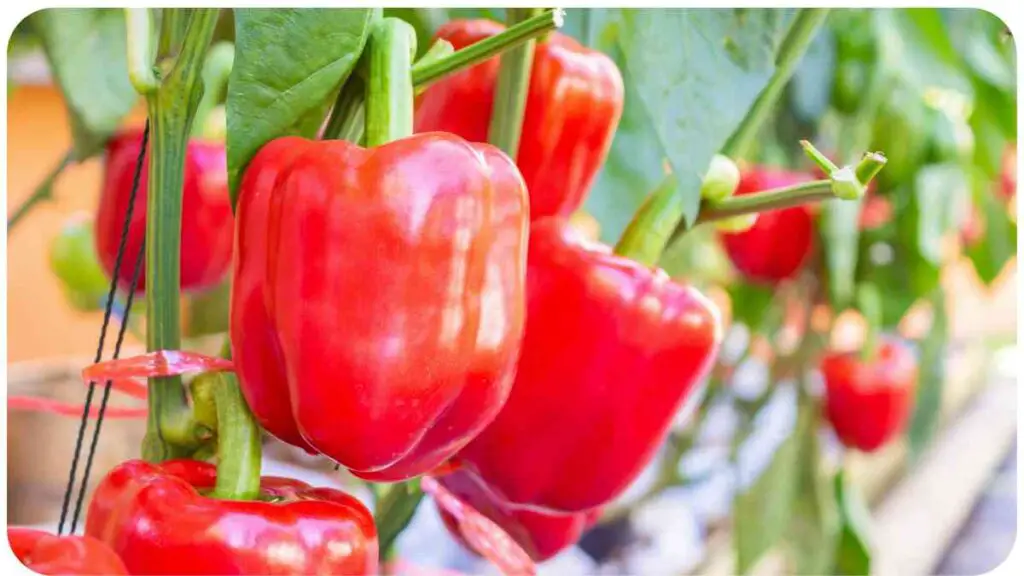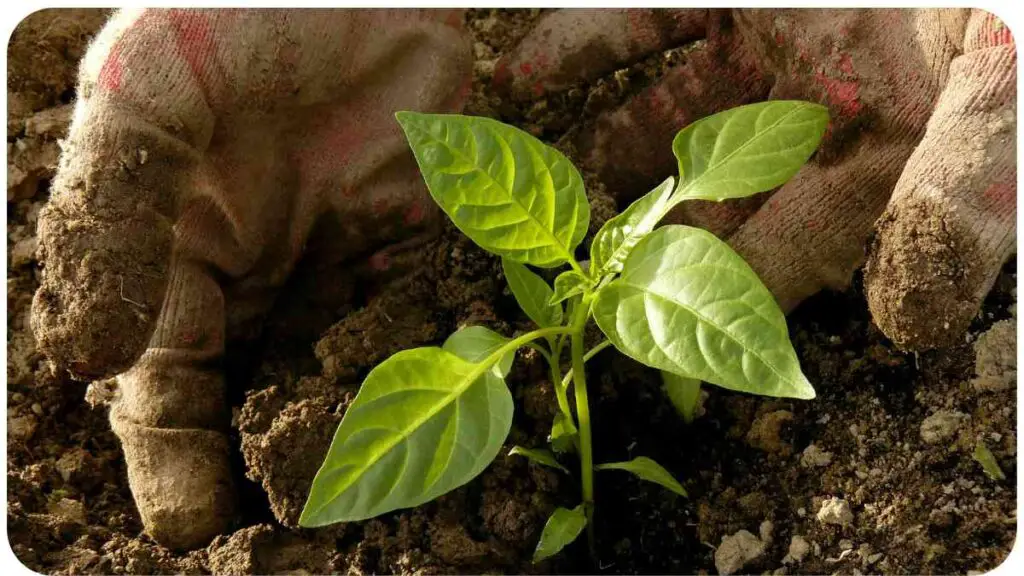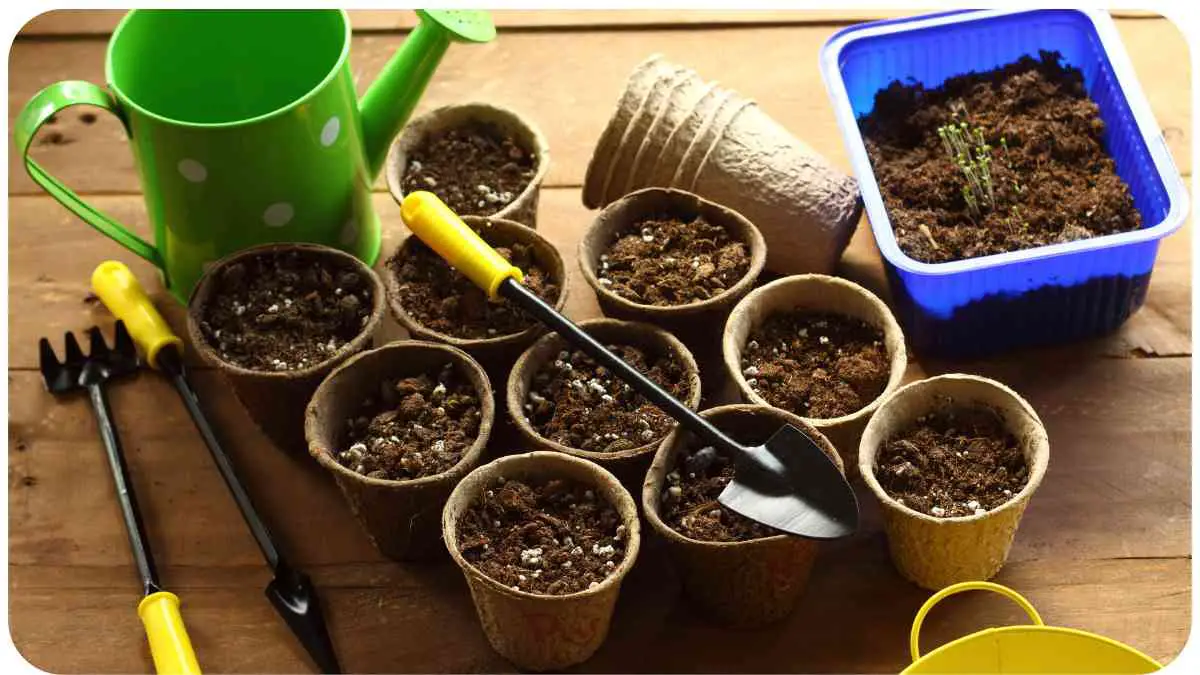Peppers are a popular addition to many home gardens, offering vibrant colors, flavors, and versatility in cooking.
Whether you’re growing bell peppers, chili peppers, or sweet peppers, providing the right amount of potting soil is crucial for their health and productivity. In this guide, we’ll explore how much potting soil peppers need and provide practical tips for ensuring your pepper plants thrive.
| Key Takeaways |
|---|
| Choosing the right potting soil is crucial for the health and productivity of pepper plants. |
| Factors such as drainage, nutrient content, and soil composition should be considered when |
| selecting potting soil. Regular fertilization, proper watering, and pest management are alsoimportant for successful pepper cultivation. |
2. Understanding the Potting Soil Needs of Peppers

Peppers, like most plants, require a suitable growing medium to develop healthy root systems and support robust growth. Potting soil serves as the foundation for pepper plants, providing essential nutrients, moisture retention, and aeration. However, the amount of potting soil needed can vary based on several factors.
Achieve vibrant plumeria blooms by selecting the best potting mix enriched with nutrients and proper drainage. Providing optimal soil conditions ensures healthy growth and abundant flowering throughout the season.
3. Factors Affecting Potting Soil Quantity
Several factors influence the amount of potting soil required for pepper plants:
- Container Size and Type: The size and type of container you use for growing peppers will determine the volume of potting soil needed.
- Pepper Plant Size and Variety: Different pepper varieties have varying root systems and growth habits, which can impact their soil requirements.
- Growth Stage of Pepper Plants: Young pepper plants may require less soil initially, but as they grow, they’ll need more space to support their expanding root systems.
- Environmental Conditions: Factors such as temperature, humidity, and sunlight can affect the water and nutrient uptake of pepper plants, influencing their soil needs.
4. Determining Potting Soil Requirements for Peppers
Container Size and Type
Choosing the right container is essential for successful pepper cultivation. Here’s a breakdown of recommended container sizes and corresponding potting soil amounts:
| Container Size | Diameter (inches) | Depth (inches) | Soil Volume (cubic inches) |
|---|---|---|---|
| Small | 6-8 | 6-8 | 300-500 |
| Medium | 10-12 | 10-12 | 800-1200 |
| Large | 14-16 | 14-16 | 1500-2000 |
Pepper Plant Size and Variety
Different pepper varieties have unique soil requirements based on their size and growth habits. Here’s a general guideline for potting soil quantities based on pepper plant size:
Ensure the comfort and well-being of your anoles by using appropriate potting soil in their habitat. Choosing the right substrate is essential for maintaining humidity levels and promoting natural behaviors in your reptilian companions.
| Pepper Variety | Soil Volume (cubic inches) |
|---|---|
| Bell Peppers | 800-1200 |
| Chili Peppers | 600-1000 |
| Sweet Peppers | 700-1100 |
Growth Stage of Pepper Plants

As pepper plants grow, their root systems expand, requiring additional soil for optimal growth. Adjust the amount of potting soil based on the growth stage of your pepper plants.
Environmental Conditions
Environmental factors such as temperature, humidity, and sunlight can impact the water and nutrient needs of pepper plants. Monitor these conditions and adjust your watering and fertilization practices accordingly.
5. Tips for Choosing the Right Potting Soil
Selecting high-quality potting soil is essential for the success of your pepper plants. Here are some tips for choosing the right potting soil:
- Look for a well-draining mix that retains moisture without becoming waterlogged.
- Ensure the potting soil is rich in organic matter and essential nutrients for healthy plant growth.
- Consider the pH level of the soil, aiming for a slightly acidic to neutral pH range (around 6.0-7.0) for optimal nutrient uptake.
- Avoid soil mixes with added fertilizers or chemicals that may harm pepper plants.
Maintain the vitality of your plants by adhering to a regular potting soil replacement schedule. Refreshing the soil rejuvenates nutrients and prevents compaction, fostering optimal root development and overall plant health in your garden.
6. How to Measure Potting Soil for Pepper Plants
Measuring potting soil accurately is crucial for providing the right amount for your pepper plants. Here’s how to do it:
Measuring Volume
Use a measuring cup or container to determine the volume of potting soil needed based on the size of your container and the guidelines provided above.
Calculating Soil Requirements
Multiply the length, width, and depth of your container to calculate its volume in cubic inches. Then, refer to the recommended potting soil quantities for your container size and pepper variety to determine the amount needed.
Revitalize exhausted potting soil with effective techniques for regenerating old soil. Enhance fertility and structure by incorporating compost, perlite, and other amendments, ensuring sustained productivity and healthy plant growth season after season.
Common Mistakes to Avoid

While potting soil may seem straightforward, there are some common mistakes that pepper growers should avoid to ensure the success of their plants:
- Using the Wrong Container Size: Choosing a container that is too small can restrict root growth and lead to stunted plants. Conversely, using a container that is too large may result in waterlogging and root rot. Select a container that provides ample space for root development without excess soil.
- Overcrowding Plants: Planting too many pepper plants in a single container can lead to competition for resources, including water, nutrients, and space. Give each plant enough room to grow by spacing them according to their mature size and growth habits.
- Ignoring Drainage Needs: Proper drainage is essential for preventing waterlogged soil, which can suffocate plant roots and promote disease. Ensure your containers have adequate drainage holes and use a well-draining potting mix to promote healthy root growth.
- Underestimating Environmental Factors: Environmental conditions such as temperature, humidity, and sunlight can significantly impact the water and nutrient needs of pepper plants. Monitor these factors closely and adjust your watering and fertilization schedule accordingly.
Upgrade your gardening practices with a comprehensive guide on how to replace potting soil. Follow step-by-step instructions to remove old soil, amend with organic matter, and provide your plants with a fresh growing medium for thriving growth.
8. Conclusion
Ensuring your pepper plants have the right amount of potting soil is crucial for their health and productivity. By considering factors such as container size, pepper variety, growth stage, and environmental conditions, you can provide optimal growing conditions for your plants. Remember to choose a high-quality potting mix, measure soil accurately, and avoid common mistakes to set your pepper plants up for success.
10. Frequently Asked Questions (FAQs)
Q: Can I reuse potting soil for peppers?
A: Yes, you can reuse potting soil for peppers, but it’s essential to replenish nutrients and improve soil structure between plantings. Consider adding compost or organic matter to rejuvenate the soil before replanting.
Q: How often should I water pepper plants in containers?
A: Pepper plants in containers typically need more frequent watering than those planted in the ground. Check the soil moisture regularly and water when the top inch of soil feels dry to the touch.
Q: Can I grow peppers indoors?
A: Yes, peppers can be grown indoors in containers as long as they receive adequate sunlight or supplemental grow lights. Choose compact pepper varieties suited for indoor growing, and provide proper ventilation to prevent humidity buildup.
Q: What is the best fertilizer for pepper plants?
A: Choose a balanced fertilizer with equal parts nitrogen, phosphorus, and potassium (e.g., 10-10-10) for optimal pepper plant growth. Additionally, consider supplementing with calcium and magnesium to prevent blossom end rot.
Further Reading
- The Best Potting Soil for Peppers: Offers insights into selecting the optimal potting soil mix for pepper plants.
- Best Soil for Pepper Plants: Provides comprehensive information on the ideal soil types and compositions for growing healthy pepper plants.
- Peppers and Potting Soil: Discusses the relationship between peppers and potting soil, including tips for successful cultivation.
FAQs
Can I use regular garden soil for peppers?
Regular garden soil is not recommended for pepper plants, especially in pots, as it tends to be too dense and can lead to poor drainage, affecting plant health.
How often should I fertilize pepper plants?
Pepper plants benefit from regular fertilization, typically every 4-6 weeks during the growing season, using a balanced fertilizer formulated for vegetables.
What are some common pests and diseases that affect pepper plants?
Common pests and diseases that affect pepper plants include aphids, spider mites, bacterial leaf spot, and powdery mildew. Regular inspection and preventive measures can help manage these issues.
How do I know when peppers are ready to harvest?
Peppers are ready to harvest when they reach their mature color, which varies depending on the variety. Generally, peppers should be firm and have a glossy appearance when ripe.
Can I overwinter pepper plants indoors?
Yes, pepper plants can be overwintered indoors in a sunny location. Prune them back, reduce watering, and protect them from drafts to ensure their survival during the winter months.

For 15 years, Hellen James has worked in the gardening industry as an expert and landscape designer. During her career, she has worked for a variety of businesses that specialize in landscaping and gardening from small firms to large corporations.

